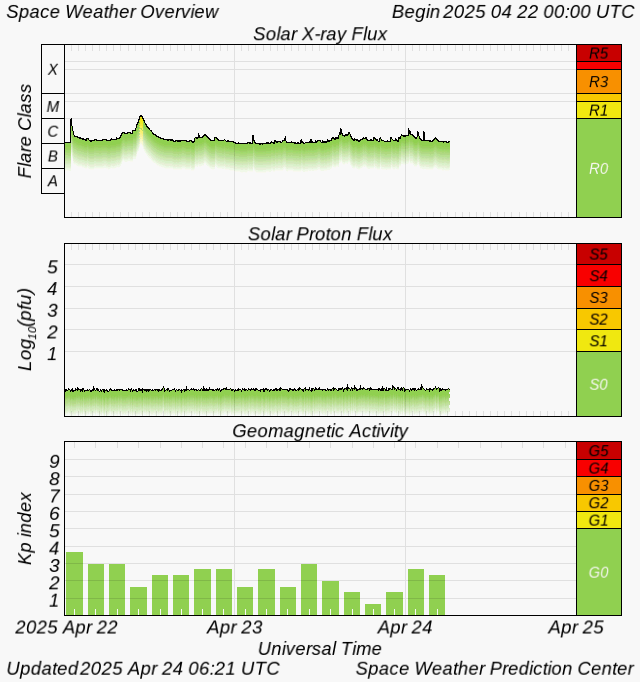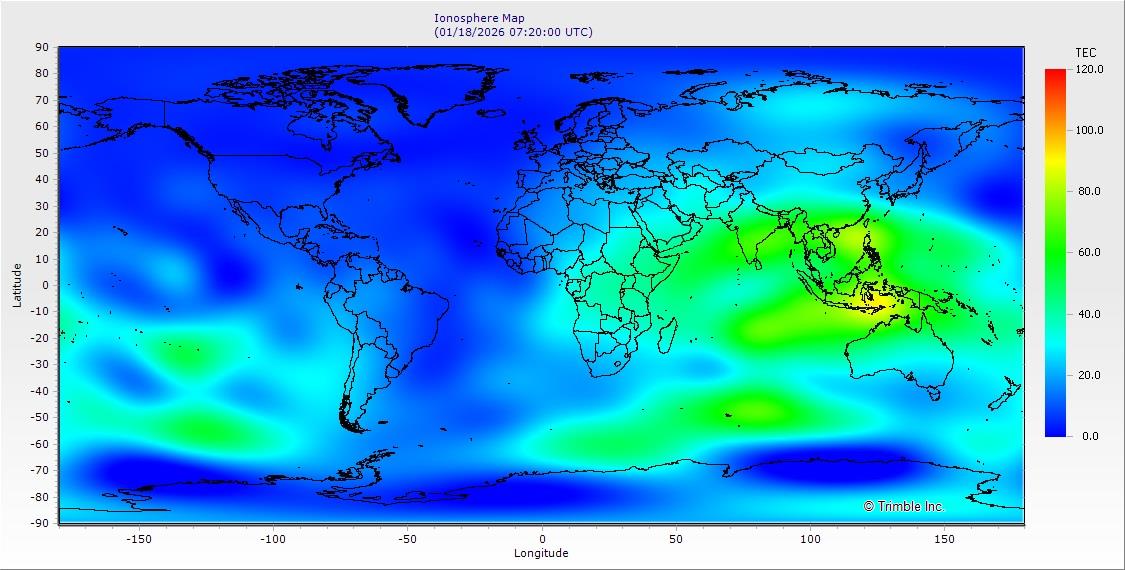GNSS Information & Status
Precision agriculture equipment relies on stable access to data streams from satellites orbiting earth. Solar "weather" can affect these communications, especially when we require high accuracy. This page lists information which shows current and future data related to space weather, and solar storms. This page is updated in real-time.
Aurora Forcast
Also known as the "Northern Lights" these are a very good indicator of solar activity.
High probability of Northern Lights indicates high levels of interference in the Ionosphere. While "green" on this chart usually isn't a big issue, once red and yellow appear over North America, there is a very good probability GPS dropouts can occure, especially with WAAS and RTK.
Courtesy of the NOAA Space Weather Prediction Center
Space Weather Overview
This chart shows current disturbances in space, and shows a record of the past few days.
Geomagnetic activity in the 5s (yellow) or higher can and do cause interference with GPS systems. Levels over 7 will cause WAAS dropouts and interfere with RTK positioning accuracy. Levels of 9 will cause radio dropouts, may cause power outages, and make GPS equipment un-usable in many cases.
Courtesy of the NOAA Space Weather Prediction Center
Ionospheric Particles
Particulate matter in the upper atmosphere can act like microscopic "mirrors", bouncing back radio transmission waves and causing high levels of interference, low signal strength, and dropouts. Smoke, sand storms, and volcanic eruptions can all cause particulate matter high in our atmosphere.
Courtesy of Trimble, Inc.
To install this Web App in your ISO device press![]() and then Add to Home Screen.
and then Add to Home Screen.


